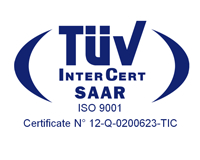The test campaign took place from 11 to 13 April as part of the HELMET project (High integrity GNSS Layer for Multimodal Eco-friendly Transportation) funded by EU H2020 – EUSPA and coordinated by Radiolabs (helmet-project.eu). HELMET’s objective is the development of innovative applications for the safe localization of vehicles, using the data of the EGNOS-Galileo satellite systems together with those of other sensors. Users are the transport means that must become increasingly eco-friendly and safer such as connected and automated vehicles, smart roads, ERTMS signaling for trains and drones to fly safely above roads and railways. The Innovation brought by HELMET is a “common and synergistic” technological platform shareable by various application sectors, capable of reducing infrastructure investments and management costs, thus incentivising the digitization of roads and railways.
The Rome-Fiumicino motorway was chosen as it is already equipped with the smart roads infrastructure of ANAS and is close to the railway section, thus representing one of HELMET’s application scenarios.
The work team coordinated by Radiolabs with Roboauto, DLR performed the phases of field tests, data analysis, and reporting on the performance of the on-board navigation platforms (MOBU – Mobile On-Board Unit) developed for vehicles and trains and based on the integration of multi-constellation and multi-frequency GNSS receivers and on-board sensors (eg IMU and LIDAR), with the support of the SOGEI augmentation network. (demo presentation and video).
With the achievement of this important milestone, HELMET confirmed the expectations and effectiveness of the developed platform – the first in Europe that allows serving railway, cars, and drones applications sharing technological infrastructure and making full use of EGNOS and Galileo.



